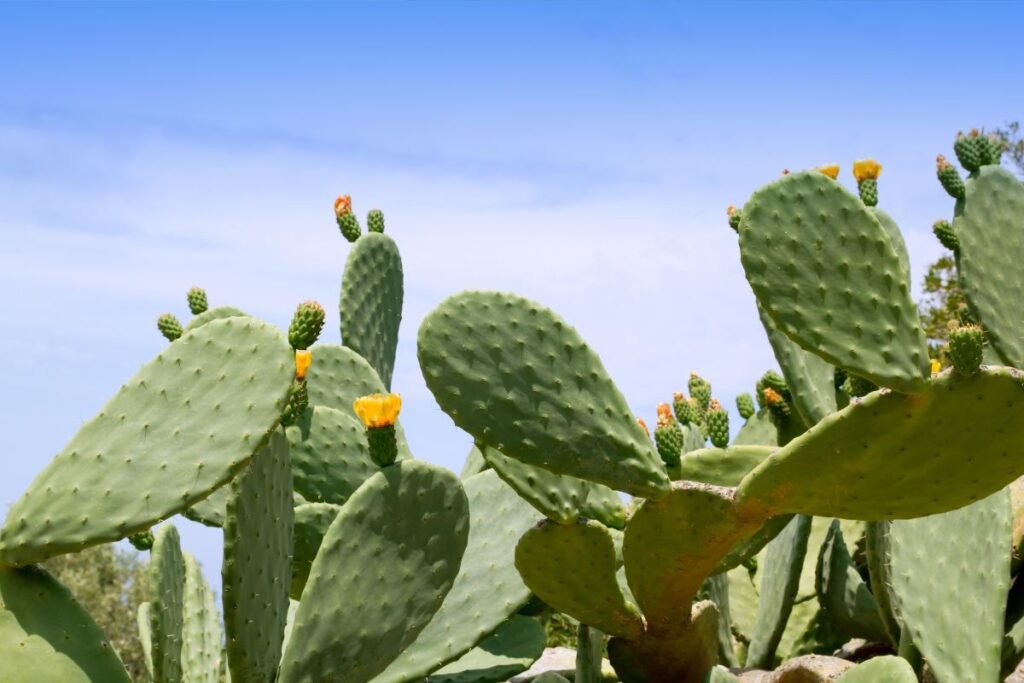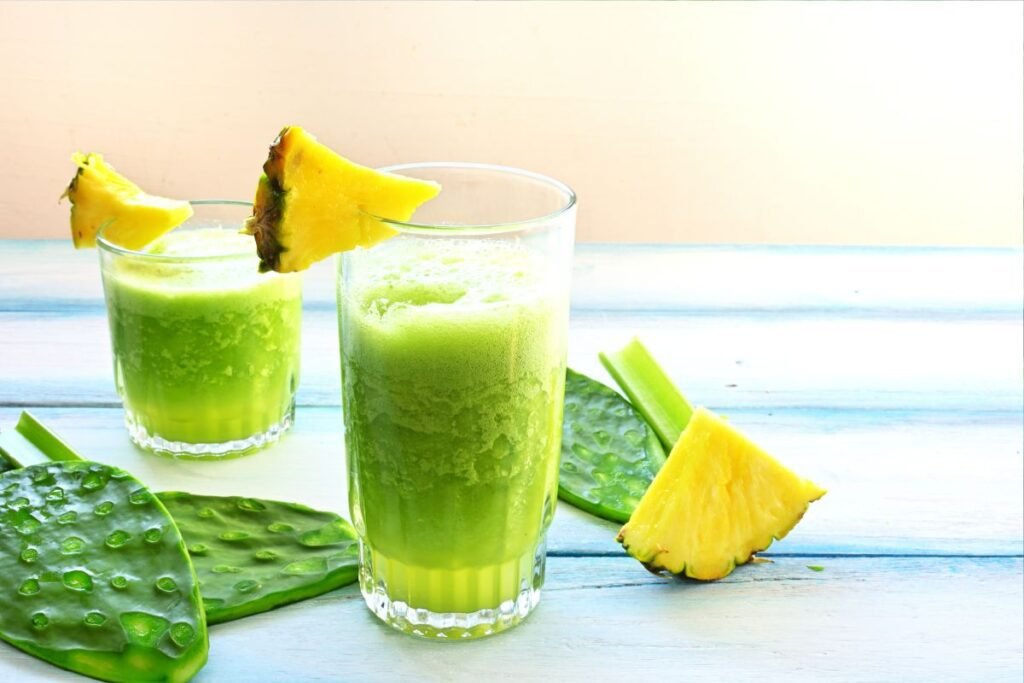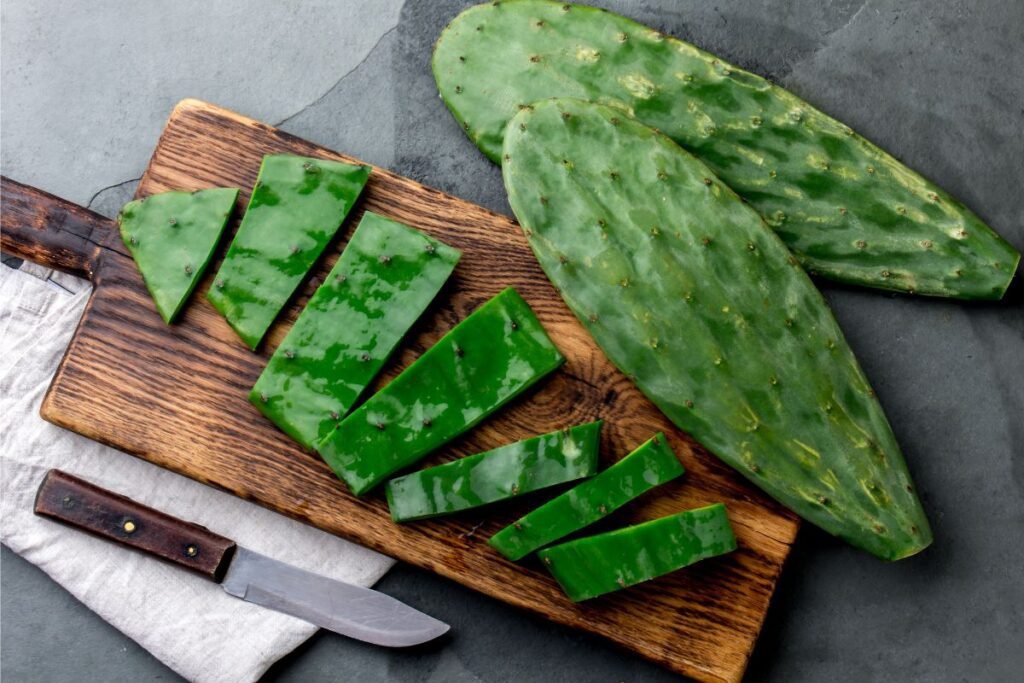Cactus juice is a beverage uncommon in many culinary traditions because cacti are not native to temperate climate regions. This exotic-sounding drink is a traditional food product in southern and central areas of America, particularly in Mexico. Nevertheless, various supermarkets in Europe also offer beverages labeled as cactus juice.
So, what exactly is cactus juice? How can you make it, and what are its benefits? You can find the answers in this article.
The Edible Cactus and Its Three Names
Certain cacti grow naturally and are used as food in the southwestern United States, Mexico, and the southern Mediterranean regions. They are also cultivated as a food source in warm climates. These belong to the cactus family and are known as Opuntia, nopal, or prickly pear. Opuntia is also known in Europe or colder regions, but only as a decorative houseplant.
These cacti have flat, fleshy, oval-shaped pads that are edible. The pads have a cover of spines and tiny, sharp bristles, which you must carefully remove before consumption. Experienced consumers can do it themselves, but pre-cleaned cactus pads ready for consumption are also available in food markets and stores.
These cacti are considered a dietary vegetable, so they are commonly eaten fresh in the southwestern United States and Mexico. Their taste has a commonality of asparagus, with a slightly tangy note. In other non-producer countries, gourmet food retailers offer preserved versions of these cactus pads, which can diversify and enrich one’s diet. However, these preserved pads are not suitable for juicing.
This cactus also produces edible and highly nutritious fruits—prickly pears. They taste like a mix of watermelon, strawberry, fig, honey, and banana. You can eat fresh fruits, add them to salads and desserts, or juice them. You can find prickly pears in some stores in your country.

What Is Cactus Juice?
When discussing authentic, traditional cactus juice known for its health benefits, we must look to Mexico and the southern and central regions of the Americas. Cactus juice is a common, well-loved, and frequently consumed beverage in these areas.
The nutritional and medicinal properties of cactus juice have been known since the time of Native Americans, giving this drink a long and rich history.
Cactus juice is an extract from the fresh pads (leaves) of the nopal cactus (Opuntia or prickly pear) or from its fruit. You can consume it in its pure form, but people more commonly blend it with other fruit juices. You also can use nopal juice as an ingredient in various beverages.
The Health Benefits of Cactus Juice
People say the nopal cactus is the only plant on Earth that contains all 24 known betalain antioxidants. These powerful antioxidants promote skin and muscle regeneration and strengthen the immune system. Additionally, this cactus is rich in vitamins C and A, which are also potent antioxidants.
The nopal cactus is highly nutritious but low in calories and fat-free. Due to its high fiber content, it has a low glycemic index, meaning it does not cause sudden spikes in blood sugar levels, making it suitable for people with diabetes.
Scientists studying the nutritional and medicinal properties of this cactus highlight its numerous health benefits, including:
- Boosting the immune system
- Exhibiting strong antiviral properties
- Protecting and regenerating nerve cells
- Enhancing the effectiveness of treatments for prostate diseases, including cancer
- Reducing cholesterol levels in the blood
- Regulating blood sugar levels
- Helping to prevent or significantly reduce symptoms of alcohol intoxication

Cactus Juice or Soft Drink—What Can You Buy?
The product available in supermarkets is a cactus juice drink rather than pure cactus juice. It is a beverage made from a concentrate of several fruit juices (usually apple and lemon), with added sweeteners and preservatives.
Products labeled as cactus juice contain no actual cactus juice concentrate—only cactus flavoring. These beverages have little in common with authentic, traditional cactus juice. What is available in many temperate climate countries are soft drinks that lack the health benefits associated with real opuntia juice.
However, you can get closer to the authentic taste and health benefits of cactus juice. Just purchase prickly pear fruits and make fresh cactus juice at home.
Prickly Pear—A Fruit for Homemade Juice
As mentioned in this article, prickly pear fruits from the nopal cactus are now available in many supermarkets. These fruits are small, slightly elongated, irregularly oval, and yellow-red. Their skin may have visible spots where spines once were, and possibly a few tiny spines remain.
Before consuming, you must peel these fruits, as their skin is solid. The best way to do this is by cutting off both ends of the fruit, which makes peeling easier. The flesh of the prickly pear has a melon-like texture and contains tiny, edible seeds.
Use only the fruit’s flesh for making nopal juice. You can juice it using a juicer or blend it with water in a smoothie maker. Then, you can separate the juice from the pulp easily by straining it through a sieve.

Fresh Opuntia Juice on Vacation—Don’t Miss the Chance to Try It!
If you ever travel to warm regions where nopal cacti are a traditional part of the diet, don’t miss the opportunity to try fresh cactus juice.
If you’re staying in such a region, you may try to prepare fresh cactus juice at home. You can purchase fresh, ready-to-use cactus pads in food markets or grocery stores. If you have a blender in your kitchen and some cactus pads in your fridge, you can enjoy a refreshing, nutritious, and antioxidant-rich cactus juice smoothie.
Experts recommend mixing this juice with other fruits for the best flavor. Here’s a traditional smoothie recipe of Mexican cactus juice:
Ingredients:
- 1 medium-sized nopal cactus pad (cleaned and de-spined)
- About ½ cup of fresh, chopped pineapple
- One cup of fresh orange juice or water
- A sprig of parsley (optional)
Instructions:
- Blend all ingredients until smooth.
- Strain through a sieve and serve over ice cubes.
- Store any leftover cactus juice in the fridge but consume within three days.

Can Cactus Juice Have Side Effects?
No reliable data is indicating significant side effects of cactus juice. Consuming this juice is considered safe for individuals without specific health contraindications.
However, some people may experience defined symptoms after drinking cactus juice, including:
- Headache
- Nausea
- Bloating
- Diarrhea
Cactus juice is not recommended for pregnant or breastfeeding women, primarily due to a lack of sufficient research on its potential effects.
Additionally, individuals with diabetes who take blood sugar-regulating medications should consult a doctor before consuming this juice, as it may affect blood glucose levels.
Sources:
- https://www.healthline.com/health/nopal
- https://www.medicalnewstoday.com/articles/320293
- https://www.mdpi.com/2072-6643/14/5/1008
- https://www.verywellhealth.com/nopal-8425881
- https://journalejnfs.com/index.php/EJNFS/article/view/90
Associative photos © Canva
